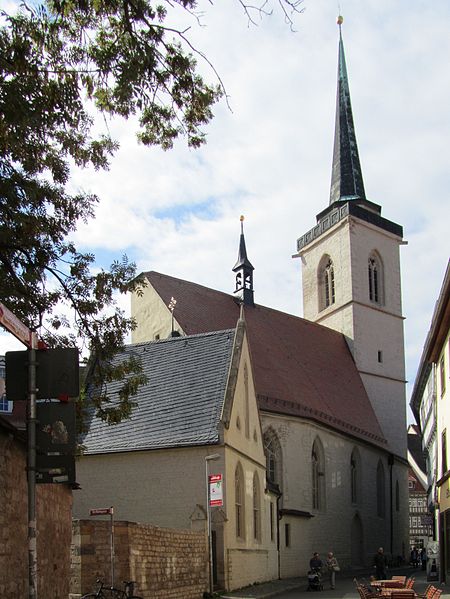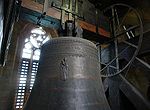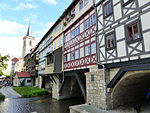All Saints' Church, Erfurt
14th-century Roman Catholic church buildings in GermanyChurch buildings in ErfurtGothic architecture in GermanyRoman Catholic churches in ThuringiaUse British English from May 2022

All Saints' Church (German: Allerheiligenkirche) in the city of Erfurt in Thuringia, Germany, is a small Roman Catholic church building dating from the 12th to 14th century. The Gothic hall church is located at the fork of Allerheiligenstraße and Marktstraße in the historical centre of Erfurt. It has an irregular floor plan and, at 53 metres (174 ft), the highest church tower in the old part of the city. Since 2007, it has been the first Roman Catholic church in central Germany to house a columbarium.
Excerpt from the Wikipedia article All Saints' Church, Erfurt (License: CC BY-SA 3.0, Authors, Images).All Saints' Church, Erfurt
Marktstraße, Erfurt Altstadt
Geographical coordinates (GPS) Address Nearby Places Show on map
Geographical coordinates (GPS)
| Latitude | Longitude |
|---|---|
| N 50.977777777778 ° | E 11.026666666667 ° |
Address
Marktstraße
Marktstraße
99084 Erfurt, Altstadt
Thuringia, Germany
Open on Google Maps










